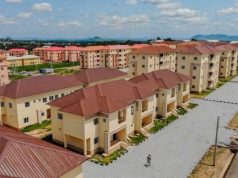Nigeria is facing a significant housing crisis that demands urgent attention and innovative solutions. With a rapidly growing population currently estimated at over 200 million, the demand for affordable housing has surged, yet supply remains critically low. This imbalance contributes to widespread overcrowding, informal settlements, and a lack of basic amenities for millions of Nigerians.
The Current Landscape
The National Bureau of Statistics reports a housing deficit of approximately 22 million units, a number that continues to grow as urbanization accelerates. Many Nigerians live in substandard conditions, with inadequate access to clean water, sanitation, and electricity. The lack of affordable housing options pushes families into the informal sector, where they face insecurity and inadequate infrastructure.
The Financial Barrier
One of the primary challenges in addressing the housing crisis is financing. High-interest rates, limited access to mortgage facilities, and a lack of affordable housing finance options make it difficult for average Nigerians to own homes. The current economic climate, characterized by inflation and currency devaluation, further exacerbates this issue, making homeownership seem like an unattainable dream for many.
Policy Frameworks and Implementation
While the government has established various housing initiatives aimed at addressing these challenges, the implementation has often been inadequate. Policies need to be re-evaluated and strengthened to ensure they meet the needs of the population. Public-private partnerships can play a crucial role in mobilizing resources and expertise to develop affordable housing projects that are both sustainable and scalable.
Innovative Solutions
To tackle the housing crisis, Nigeria must explore innovative solutions. This includes utilizing technology for building processes, such as prefabrication and 3D printing, which can significantly reduce construction costs and time. Encouraging local materials and sustainable building practices can also lower expenses while promoting environmental sustainability.
Additionally, community-driven projects that involve local populations in the planning and construction processes can lead to more effective and tailored housing solutions. Such initiatives can foster a sense of ownership and responsibility among residents, ensuring that developments are maintained and improved over time.
Conclusion
The Nigerian housing crisis is a multifaceted challenge that requires a collaborative approach involving government, private sector stakeholders, and communities. By prioritizing affordable housing and implementing effective policies, Nigeria can not only improve living conditions for millions but also stimulate economic growth and social stability. The time to act is now—ensuring that every Nigerian has access to safe, affordable, and dignified housing should be a national priority.




